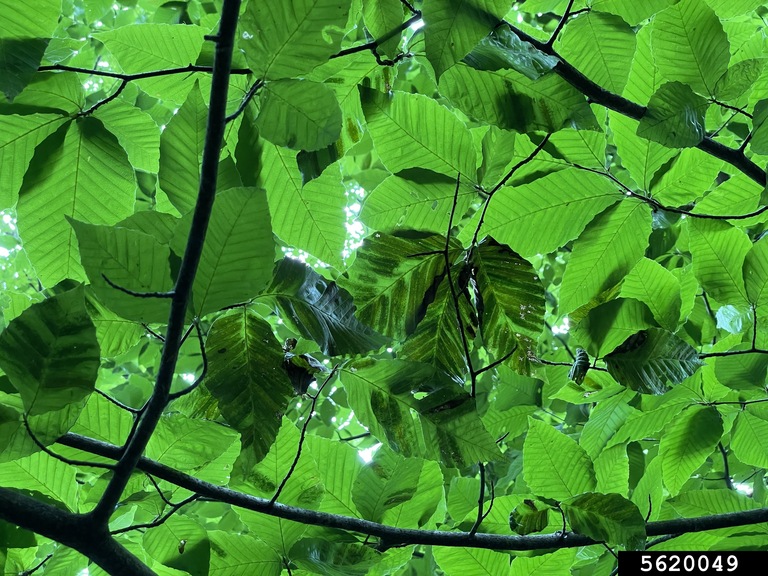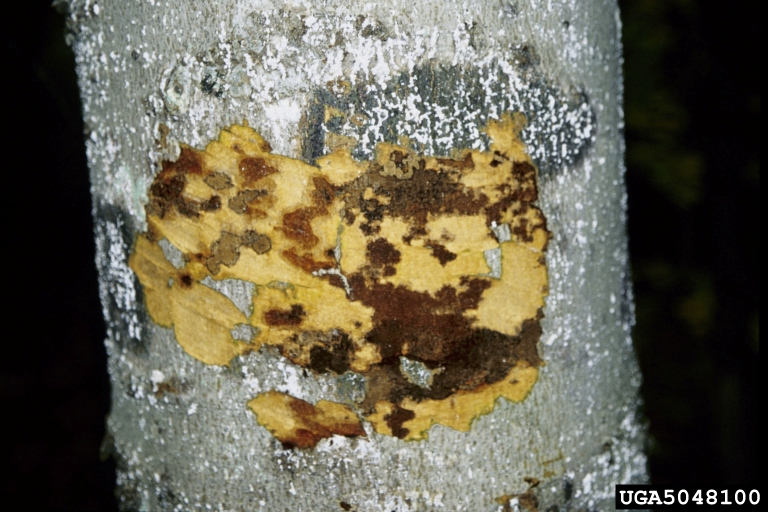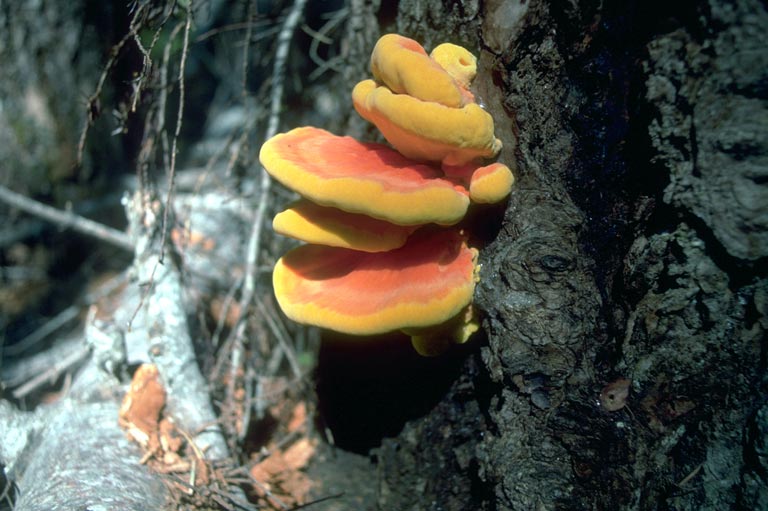Beech trees are known by foresters and residential gardeners alike for their smooth grey bark and beautiful oval leaves. These trees are a popular choice for landscapers and homeowners as they provide shade, privacy, and aesthetic value. However, just like any other tree, beech trees are prone to different diseases that can affect their overall health and beauty. In this blog post, we will discuss the most common beech tree diseases, their symptoms, and how to manage them to keep your beech trees healthy.
Beech Leaf Disease (BLD)

Photo credit: Matthew Borden, Bartlett Tree Experts, Bugwood.org
One of the most common beech tree diseases is beech leaf disease. This disease affects all species of beech trees, and its symptoms include discolored stripes on leaves, thickening leaves, defoliation. Beech tree leaf disease is caused by an invasive pest that feeds on beech leaves, eventually causing severe damage if left unchecked. Unfortunately, there is no known cure or treatment for beech leaf disease. However, as we know, keeping trees healthy through proper maintenance, regular pruning, and Bio-Stimulants can reduce the likelihood of your beech tree succumbing to pest issues like this one. Because this disease is invasive, authorities are tracking its spread throughout the US. Presence of this condition has been confirmed in Virginia. If you suspect your tree has beech leaf disease, be sure to report it to the Virginia Department of Forestry.
Beech Bark Disease (BBD)

Photo credit: Joseph OBrien, USDA Forest Service, Bugwood.org
Beech bark disease is another common disease that begins with an insect. This disease affects the tree’s bark, causing it to split, crack, and eventually die. This disease is characterized by the presence of oozing reddish-brown patches (cankers) on the bark. The disease is caused by a fungus that infects the bark through wounds, often caused by scale insect feeding activity. To prevent this disease, regularly inspect your trees for visible wounds, bark damage, or scale insect presence. Scale insects can be treated by professionals, but beech bark disease cannot. Prevention is key, so either monitor your beech trees closely or have an expert keep an eye out for you by investing in a Canopy Protection Program.
Root Rot

Photo credit: Dave Powell, USDA Forest Service (retired), Bugwood.org
If you’ve been following our series on common tree diseases, you’ll see that root rot makes the list almost every single time. The most common root rotting fungus found on beech trees is Laetiporus root rot. This disease affects beech trees growing in wet soil or those that receive excessive water. Root rot is caused by fungus and results in rotted roots, which cause the tree to weaken and eventually die. This particular type of root rot causes trees to become very hazardous, which means infected trees should be removed promptly to avoid injury and property damage. Some signs to look out for include cracked branches and brightly-colored fungal growths on the bark.
Beech trees can be a valuable addition to any landscape, but they are prone to different diseases that can affect their beauty and overall health. Understanding common beech tree diseases, their symptoms, and management is essential to keep your trees healthy and beautiful. With proper care, maintenance, and proactive management of common beech tree diseases, you can ensure your beech trees will thrive.


